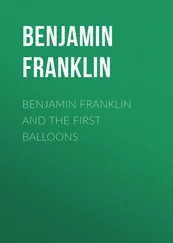Maybe it’s not just the climate that makes the Neapolitans lazy. After all, it’s only physical work they find so unappealing. When they’re bargaining, however, or transacting business, they’re very much in their element. The Neapolitans are great tradesmen, and the Bank of Naples is over 500 years old, making it one of the oldest in Europe. But what I wanted to say was this: the Neapolitans shy away from physical labor not only because the weather allows them to get along fine without a roof over their heads for part of the year, and not only because there’s always something to be made of the overabundance of fruits and sea creatures found on the street, but also because the work, at least in the factories, is particularly hard. Industry in Naples is very much behind the times, especially now, although the city must have almost one million residents. Don’t picture Naples with the new, clean, light factory buildings found in lots of big German cities. Take a look at the desolate shacks in Portici, Torre Annunziata, Biscragnano, and Nocera, in short, in any of Naples’s countless suburbs, or walk in the blazing sun down the endless dusty streets where they’re located, or try just to navigate your way through one of them, and you’ll understand why many Neapolitans prefer even the most miserable idleness to industrial labor in such conditions.
Food is the main product of Naples. Most importantly, the Neapolitans process and can the many fruits that ripen on the slopes of Vesuvius, along with tomatoes. They also produce macaroni in all shapes and sizes. These goods go mainly to India and America, because the other countries on the Mediterranean produce and sell similar foods. And then there are the big textile mills, but they manufacture only the cheapest fabrics. These mills were created not by Neapolitans, but by foreigners. After just a day in Naples, however, one thing stands out as made locally, because it’s everywhere in the streets, and that’s furniture, beds in particular. The other merchandise is grouped by specialty in certain streets, where there are ten or twenty stores selling the same thing. It might seem that it would hurt the traders to be so close to one another, but it clearly doesn’t, because this is also the case in other cities. There are streets where nearly all the shops sell leather goods, others where every third shop sells old books, and then some with one proprietor after the next, each making watches.
The goods from all these stores overflow onto the streets: books lie in little crates in front of bookstores; beds and tables stand halfway on the pavement; hosiery and clothing hang in doorways and on the exterior walls of shops. But a good portion of Neapolitan business is transacted without premises, making do just with the street. I remember a man who stood at a street corner on an unhitched carriage. Crowds swarmed around him. The carriage box had been swung open and the hawker pulled something out of the box while extoling the item in one continuous sales pitch. I couldn’t make out what it actually was, because before you could see it, it disappeared into a small piece of pink or green paper. He then held the thing high over his head and instantly it was bought for a few soldi. I asked myself whether there were perhaps prizes in the paper, or little cakes with coins hidden inside, or fortunes from soothsayers. The mysterious expression on the man’s face was like that of a peddler from 1001 Nights. But the most mysterious thing was not, as I would soon find out, what was for sale, but rather the artistry of the seller, who sold it so quickly. What was in the colorful paper? What was he twisting into it? Just toothpaste. Another time, when I was up very early, I saw a street peddler unpacking his things from a suitcase. But how he did this was true theater. Umbrellas, shirt fabrics, shawls, each piece he presented individually to his audience, and warily, as he first had to examine each of the goods himself. Then, seemingly out of wonder and surprise at how beautiful his things were, he began to heat up, spread out a scarf, and asked for 500 lire — which would be about eighty marks. Then all of a sudden he folded up the scarf, lowering the price with each successive fold, and finally, once it had become just a small bundle in his arm, he delivered his final price: fifty lire. 4
If this is the scene on just any corner in Naples, you can imagine what a market must look like. And the fish market is the strangest of them all. Starfish, crabs, polyps, snails, squid, and all sorts of other slithery things — just one look at them will give you goose bumps — are gobbled up like treats. I must say, it wasn’t easy for me to scoop that first squid out of the red, peppered broth in which it swam. I’ve always thought that in foreign countries, one should do more than just look around and, when possible, speak the language; one should go further and adapt to the customs of the country, as in the way people live, sleep, and eat. After a while, even squid tastes wonderful. And why shouldn’t it? The Neapolitans are great culinary experts. Only in Germany’s finest restaurants do diners get to see the meat, fish, etc., before it’s prepared. In Naples, this happens even in the most humble eateries; the few provisions a tavern has bought for the day are displayed in the window. Every September 7, Naples is host to great gluttonous feasts: the Piedigrotta, an old Roman fertility festival still celebrated by the Neapolitans. And how do the poor make sure they and their families have something good to eat on this day? All year long, week after week, they pay the shopkeeper twenty or thirty soldi more than they owe. During the days of Piedigrotta, this extra money is added up and then the people have their joint of roast goat, their cheese, and their wine. Thus, in Naples, people insure themselves for the national feast the way we insure ourselves against old age and accidents.
In other respects, what happens during Piedigrotta defies description. Imagine that in a city with one million residents, all the boys and girls have conspired to make the most outlandish and infernal commotion, up and down the street, in front doors, on public squares, under bridges and arches, starting at nightfall and not letting up until dawn. Then imagine that most of them have bought one of the wretched, garish horns on offer at every street corner for five centimes. And that they run around in mobs with no other purpose than to assail innocent people, blocking their way, surrounding them on all sides and blasting into their ears until their victims either collapse half dead in the street or somehow manage to escape. To make up for this, elsewhere in the city there is something sweet and agreeable for the ears: on this day a competition for songwriters is held in Naples. Most of the songs heard every day in the streets on accordions and small pianos have their debut during the Piedigrotta festival, and judges award prizes to the best. Naples showers renown on a gifted singer nearly as much as America does on a talented boxer.
But the great holidays are just part of it. Almost every day there’s something happening in this city. Each neighborhood has its own guardian saint, and on the saint’s name day, the festivities get under way early. In fact, they begin a few days beforehand, when posts are erected to which green, blue, or red light bulbs are attached, and when paper garlands are strung from one side of the street to the other. Paper of all colors plays an essential role in these street scenes; its radiance, its mobility, and how quickly it wears out perfectly reflect the lively and temperamental character of the Neapolitans. Red, black, yellow, and white fly-whisks, altars made of bright, shiny paper abutting the city walls, green paper rosettes on the raw and bloody cuts of meat: such sights are everywhere to be seen. The traveler folk — they’re everywhere here in the streets — quickly scout out which neighborhood is hosting festivities and head over there at once. And what characters I came across! The fire-eater, calmly surrounding himself with bowls of fire on a wide sidewalk, and then gobbling up the flames from one bowl after another; and the silhouette-cutter, perched in the shade of a city gate, placing his models in the glaring sun and, for one lira, cutting a strikingly accurate profile in shiny black paper. I won’t speak of the soothsayers and athletes, as we see these sorts at fairs here in Germany. But I would like to tell you about a type of painter I’ve never observed anywhere but in Naples. At first I didn’t see him, the painter, at all, only a crowd encircling what seemed to be an empty space. I moved closer. And there, kneeling in the middle of this cluster of people was a small, nondescript fellow drawing a Christ-figure on the cobblestones with colored chalk, and under it the head of the Madonna. He takes his time. He is obviously working with great precision, contemplating where to apply the chalk in strokes of green, yellow, or brown. After a long while he gets to his feet and waits beside his work. Fifteen minutes pass, maybe a half hour, until gradually the limbs, head, and torso of his drawing are covered with copper coins, two or three each thrown from every one of his admirers. He then gathers up his money and soon the drawing disappears under people’s footsteps.
Читать дальше












